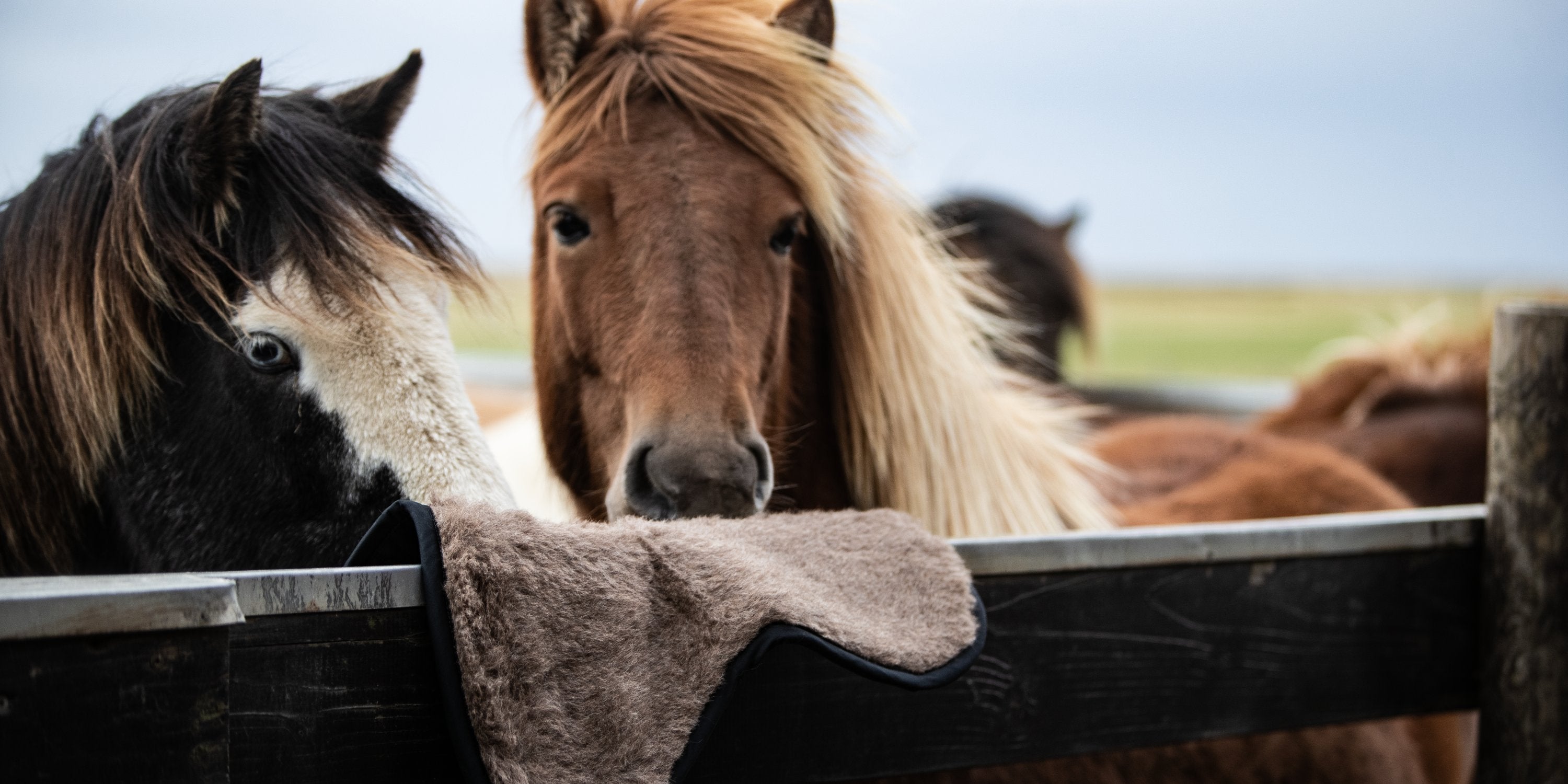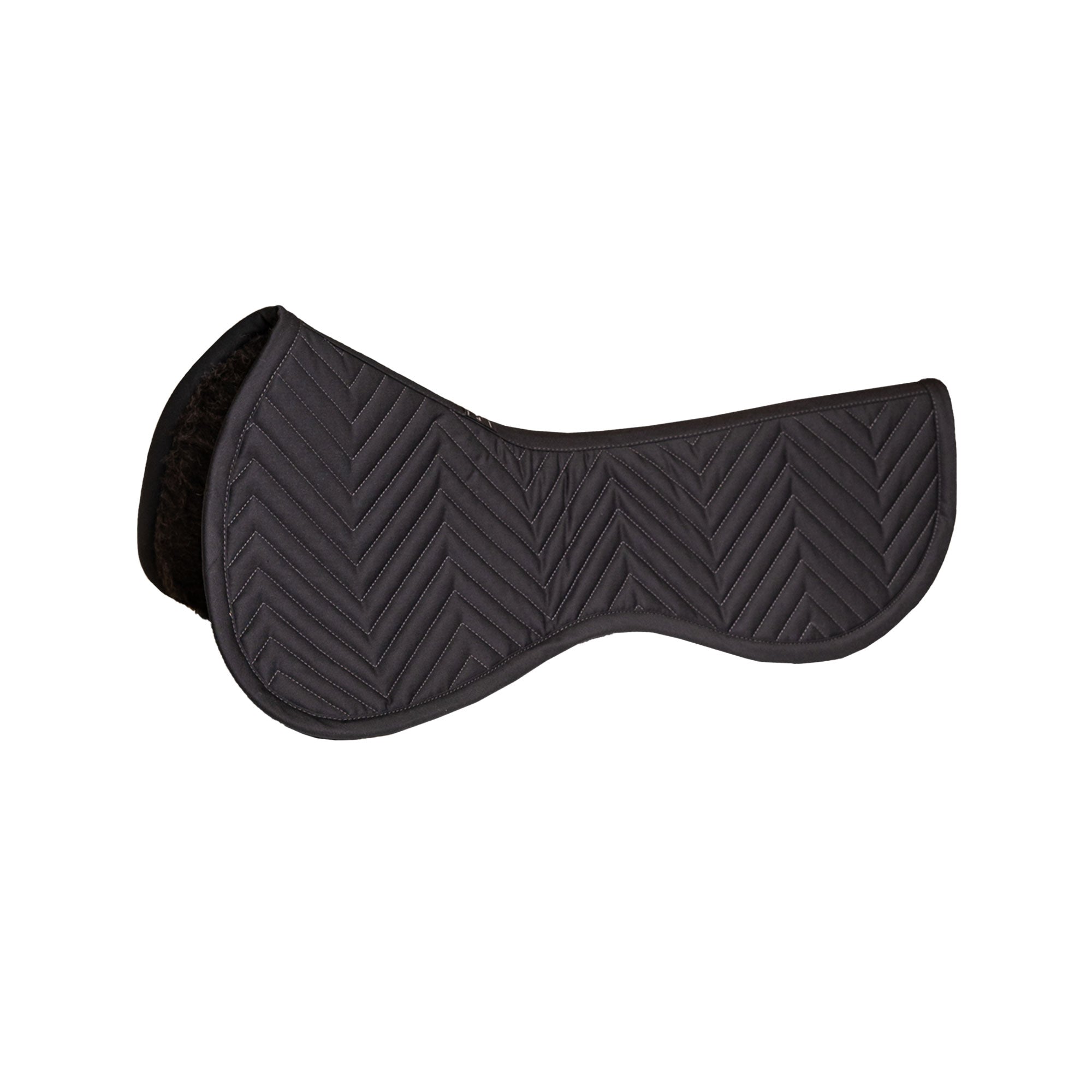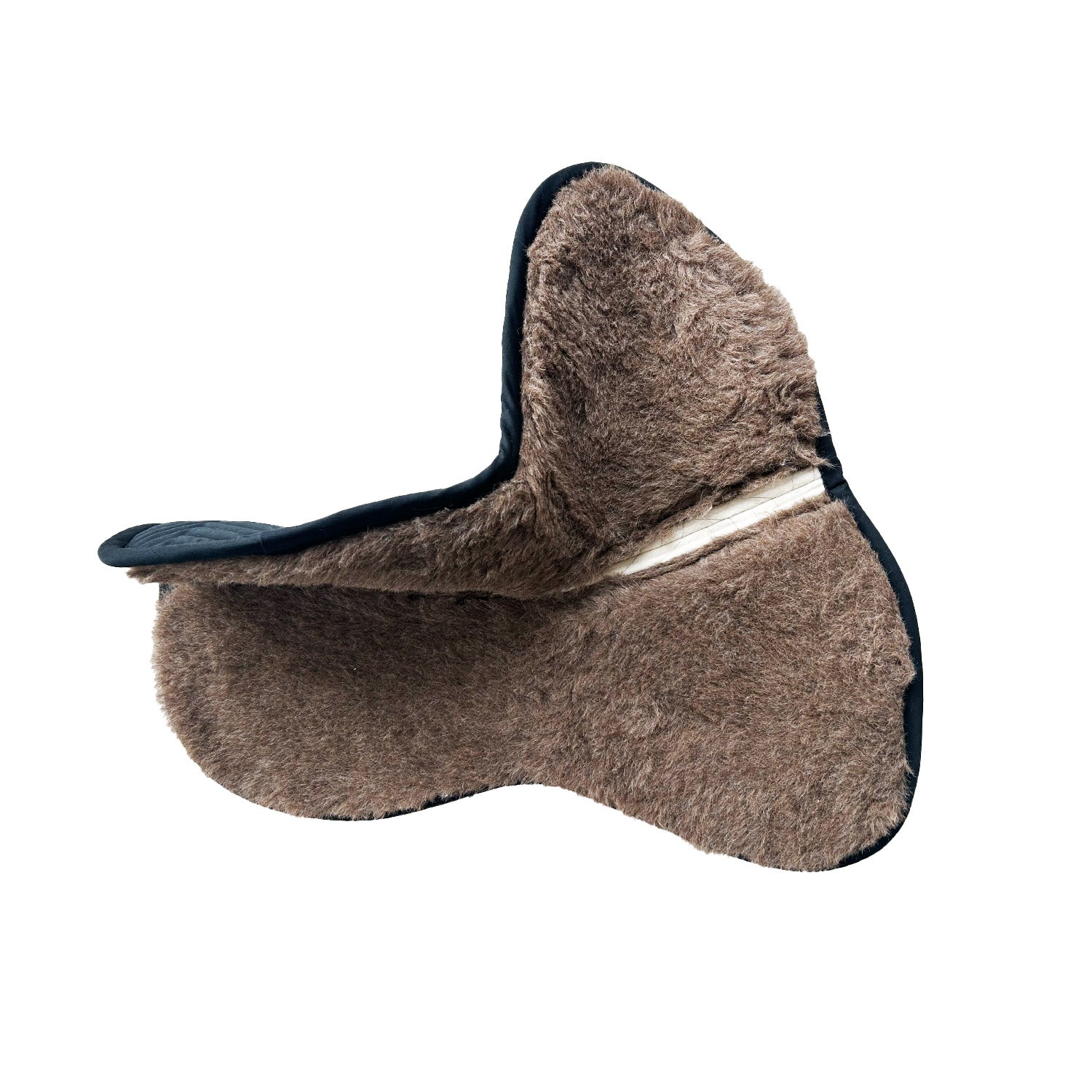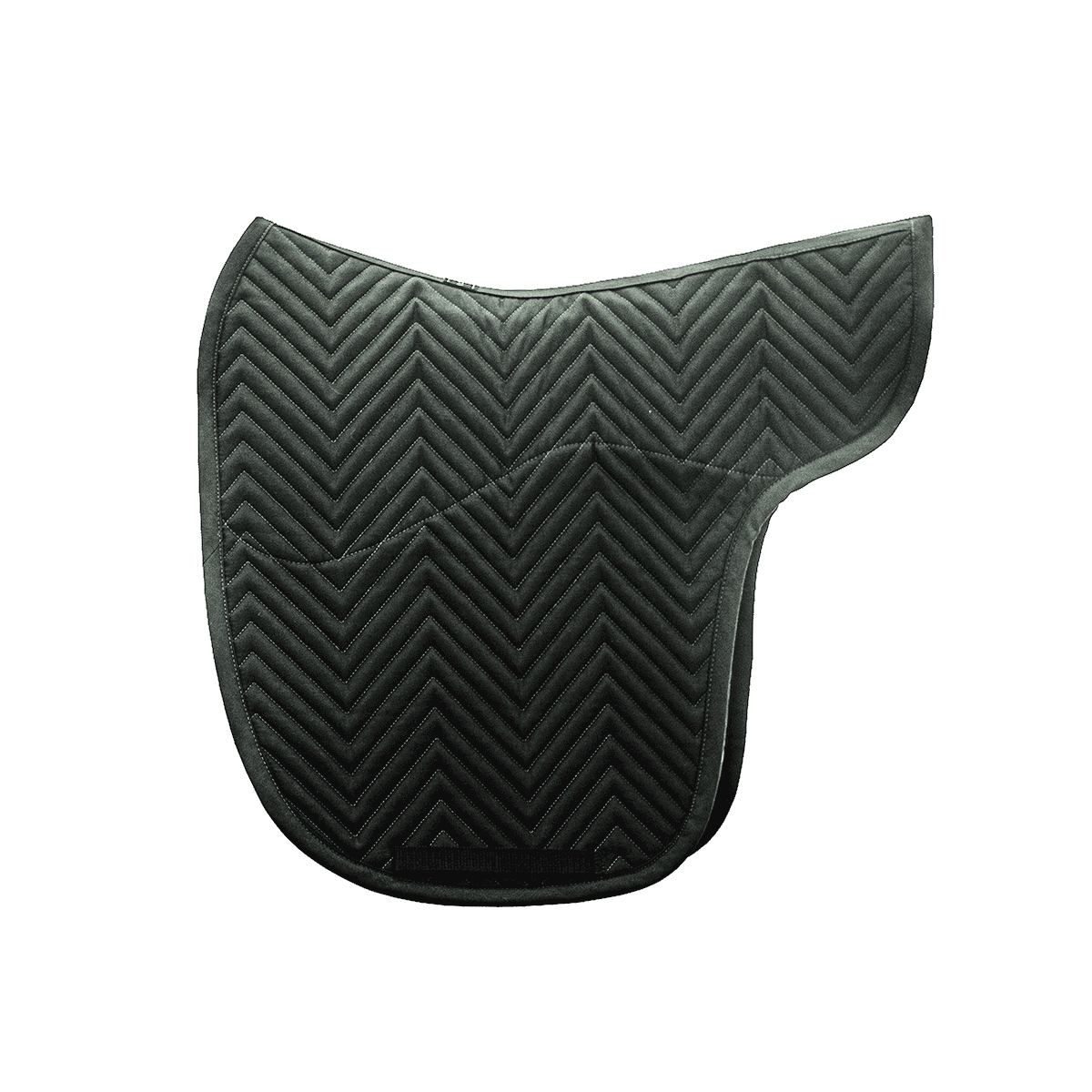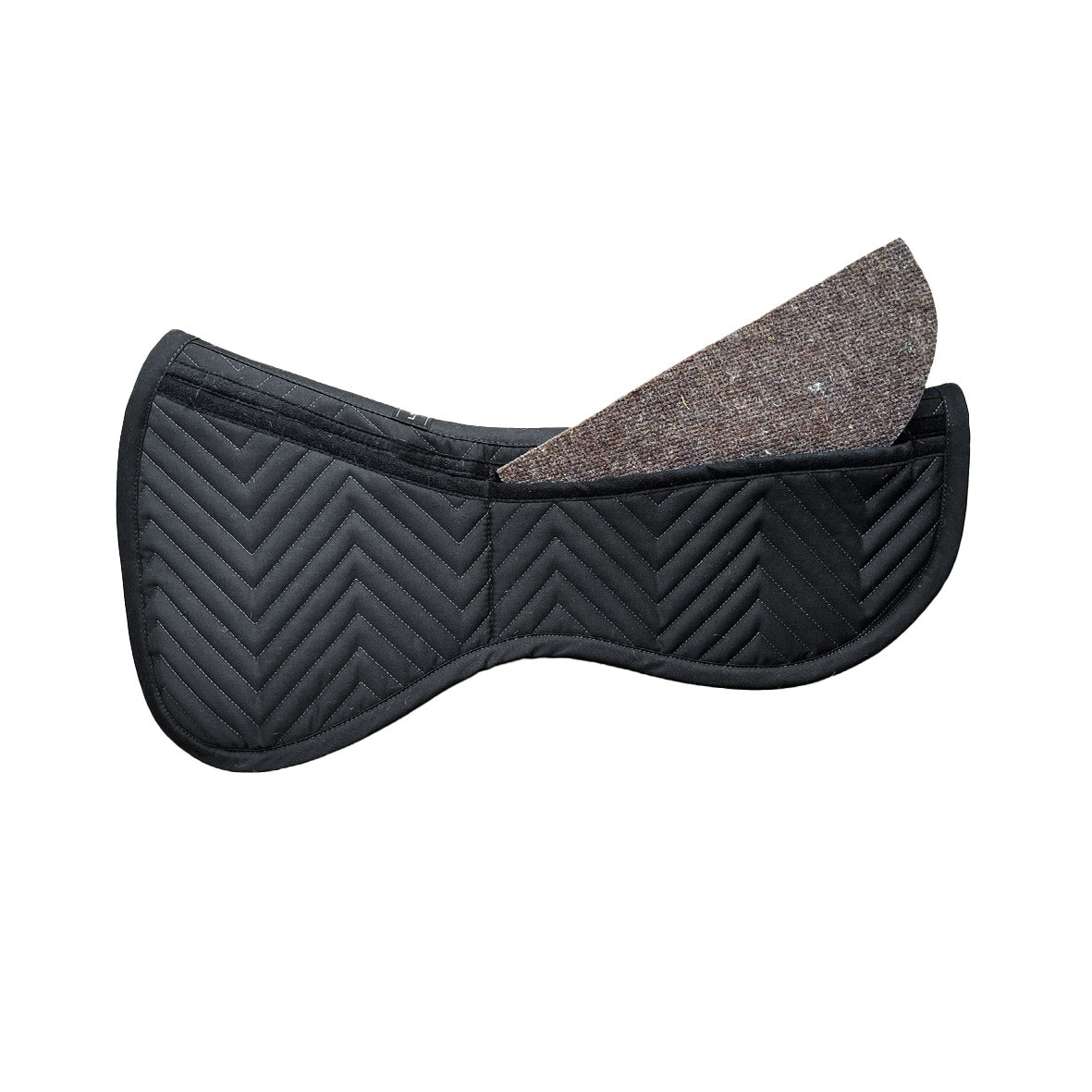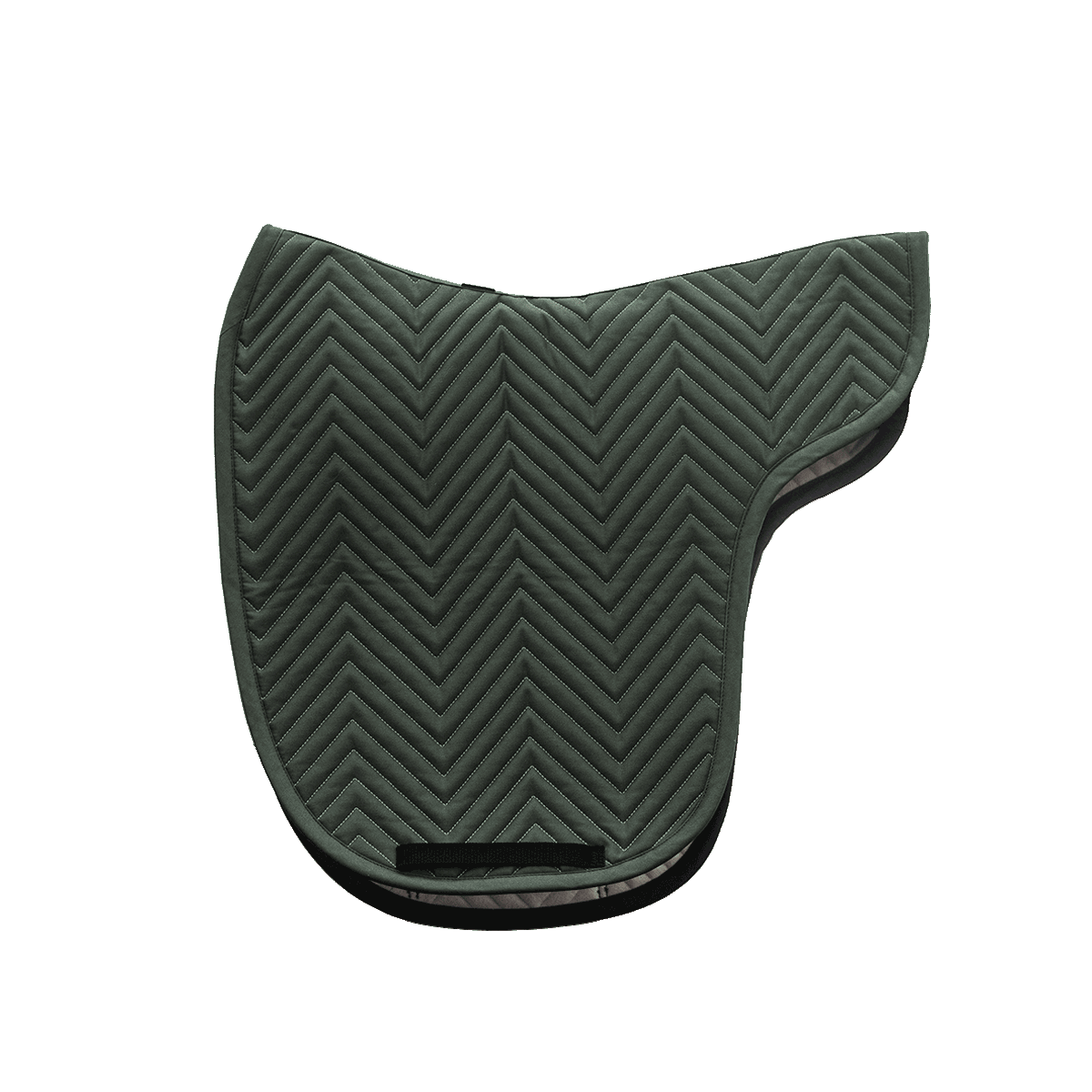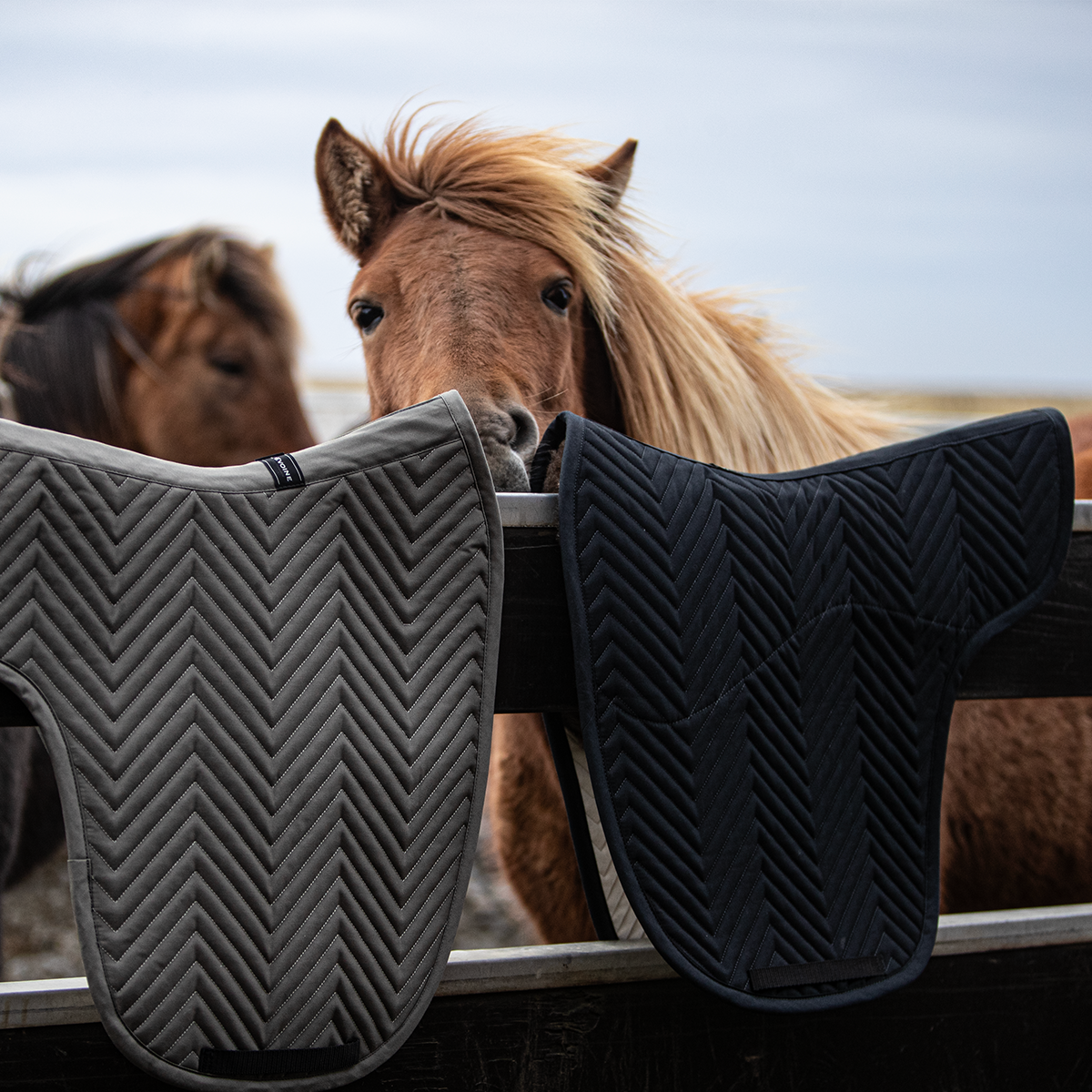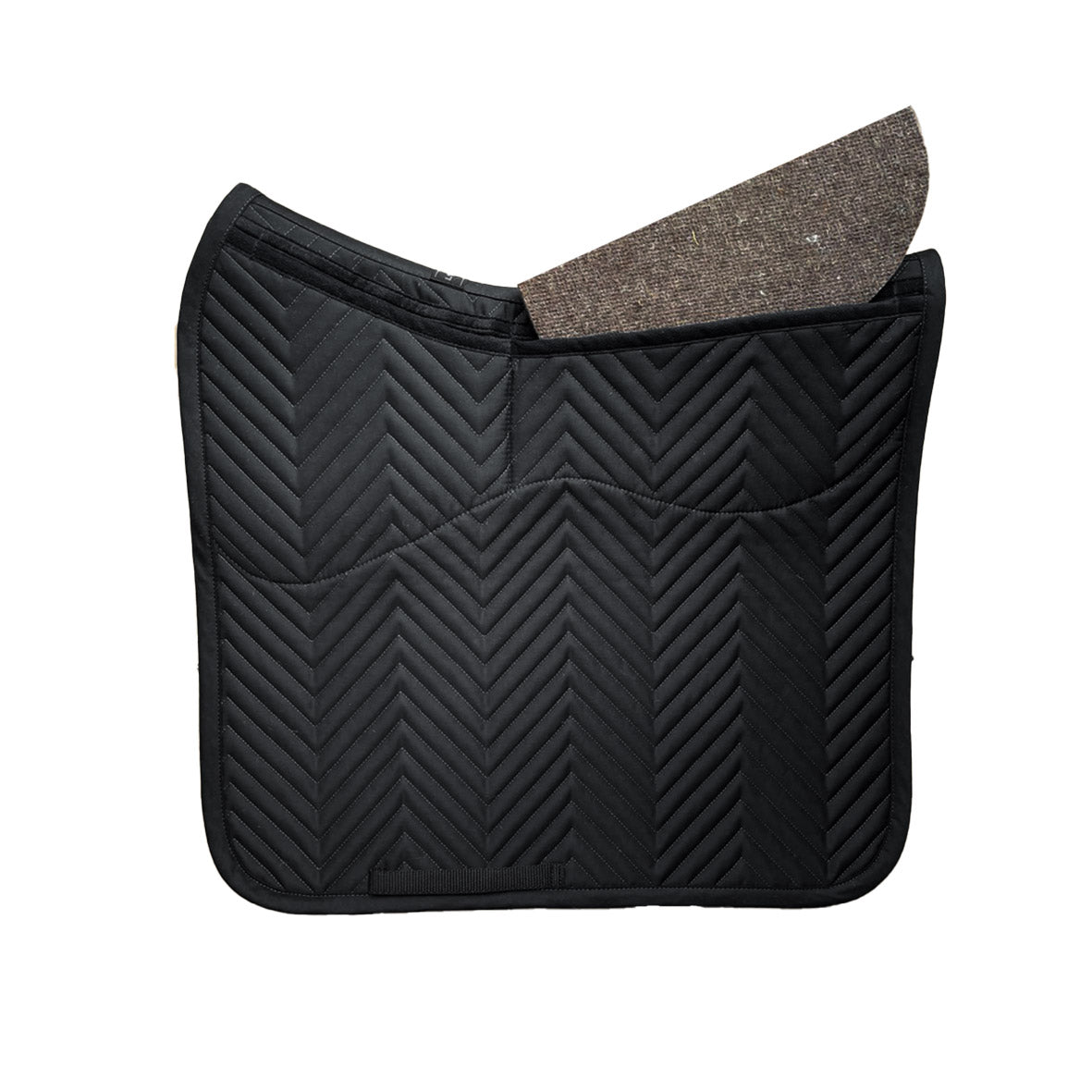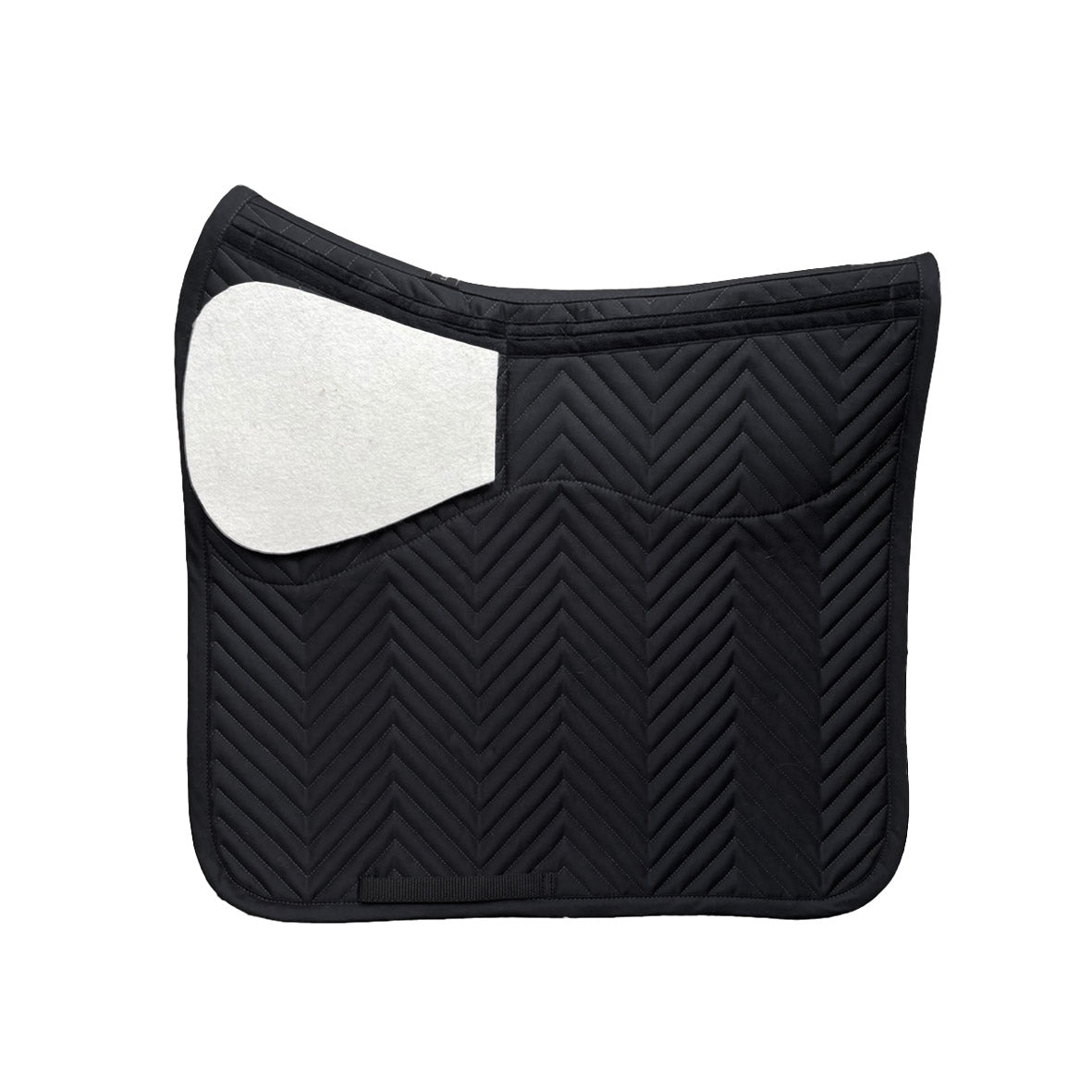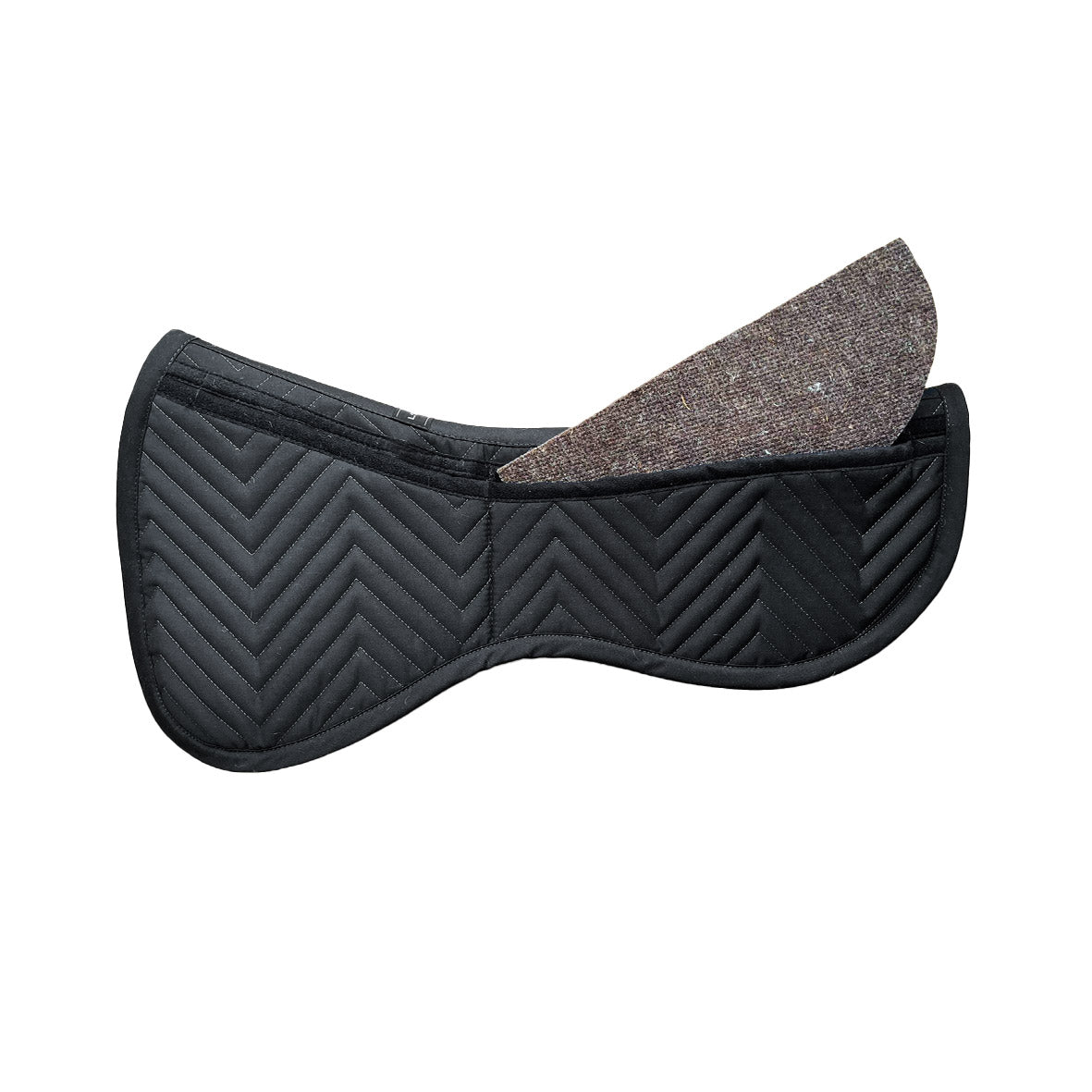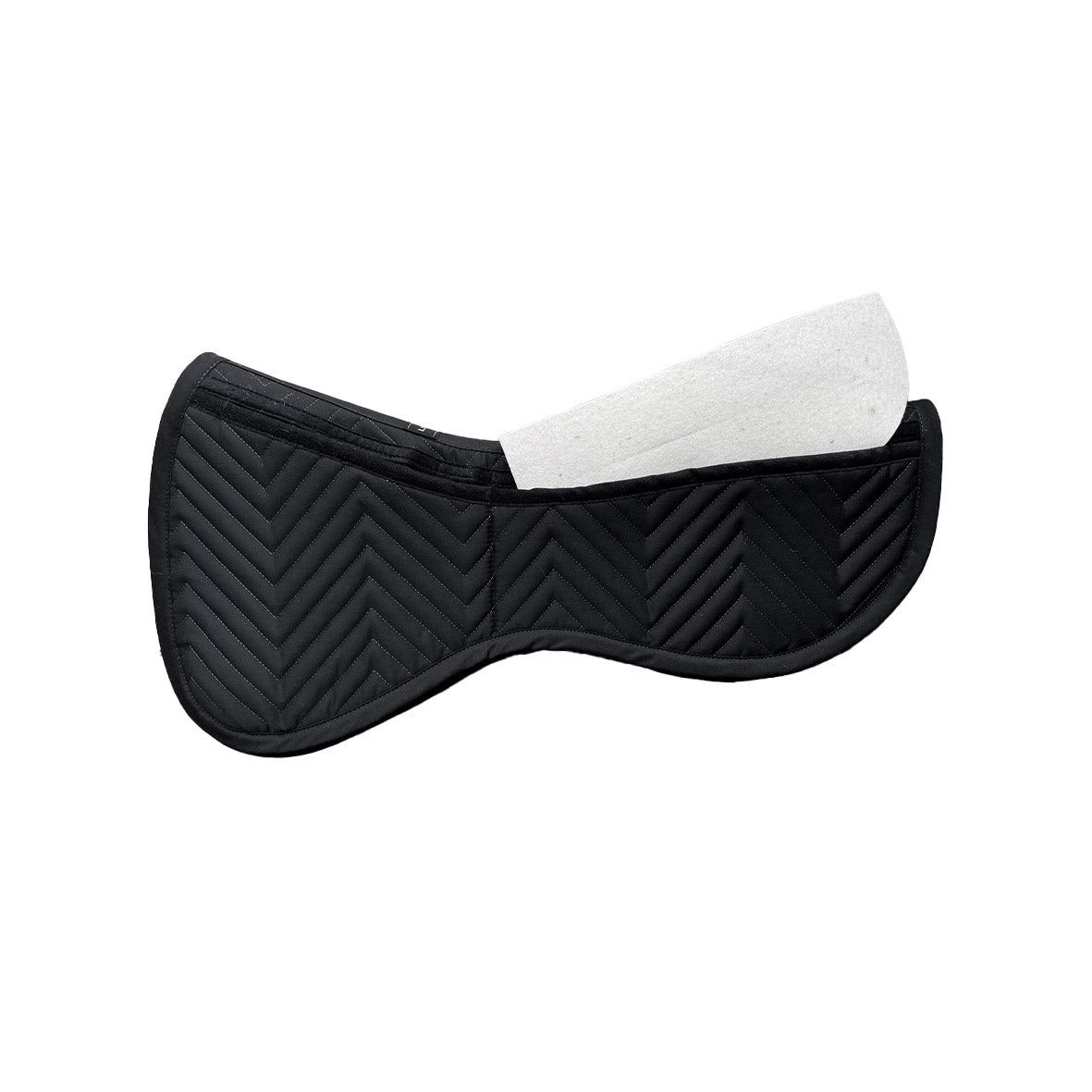For Icelandic horses, either saddle covers, which replicate the entire contact surface of the saddle, or saddle pads, which only lie under the saddle cushion, are used. It is important that the saddle pads are tailored specifically for Icelandic horse saddles, as these have a flatter and more open seat than saddles for other horse breeds. Saddle pads should be anatomically cut to ensure an optimal fit.
Icelandic horses have some anatomical peculiarities that should be taken into account when determining the position of the saddle and the optimal fit of saddles and saddlecloths. Ordinary saddles often place the rider's weight too far forward on Icelandic horses, which can affect the movement of the horse's shoulder blades. To avoid this, the rider's weight should rest on the horse a little more than with other horse breeds. The saddle position of Icelandic horses is often shorter, so it is important to choose a saddle and saddle cover/saddle pad that fits the length of the horse's saddle position.
Using a saddle pad with alpaca fleece can be helpful to optimally adjust the saddle and improve comfort through shock absorption and pressure distribution for the horse. Alpaca saddle pads and saddle pads can help prevent pressure points and optimize the fit of the saddle. Choosing the right saddle pad depends on the nature of the horse's surface muscles and whether sensitive skin (inflamed sebaceous glands) plays a role.

